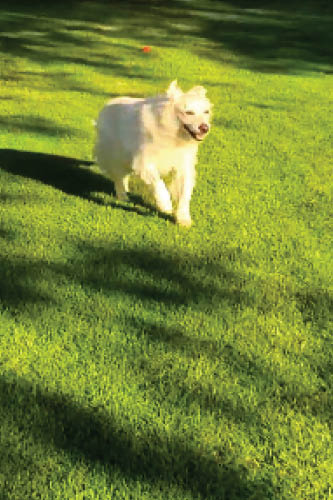What temperature is too hot for cats?
In the UK we’re not well adapted to extreme weather, but with temperatures rising, we are seeing hotter summers.
Your furry friend is pretty happy if the outdoor temperature is between 5℃ - 30℃. Once the temperature rises to 35℃ and above, they might struggle. If they can't control their body heat, they risk hyperthermia or heatstroke. Although they love to laze in the sun, they can quickly get several degrees warmer than the air temperature as they soak up the rays—so ensuring your cat stays cool is vital in the summer heat.
What room temperature is too hot for cats?
In the summer, it's hard to keep the house cool, especially if you don't have air conditioning. Try to keep the indoor temperature around 25℃ if it's super hot outside. Any higher and your cat may begin to struggle, especially kittens, long-haired or brachycephalic cats.
Use fans, open windows, keep curtains closed—do everything you can to keep the house cool for your cat
How do cats cool themselves off?
Being even more lazy than usual is actually part of their master-cooling-plan. Cats conserve energy when it's hot...by doing nothing. So don't encourage them to play too much. Let them doze.
If they're not stretched out snoozing, they're likely to be grooming themselves. The saliva on their coat evaporates, keeping them cool.
7 tips to keep your cat cool in hot weather.
Cats' sweat glands are in their paws. If you notice them leaving paw prints as they walk, they're hot. Help them to keep cool with these summer survival tips.
1. Plenty of water
Even on a normal day, cats should have access to one more water bowl than the number of cats in the house. In the warm weather, make sure there are plenty of places for them to drink. Keep their bowls topped up and cool. Cats love to drink from glasses—fill a glass right to the top and pop it near their favourite spot, and they're almost guaranteed to drink more! Consider buying a cat drinking fountain - cats love running water and it’s safer than leaving a tap dripping! You can find them in most good pet stores.
2. Make shade
Whether they're indoor or outdoor cats, getting away from the sun is vital to help them stay cool. Hang up a sheet as a makeshift canopy, or pop some old boxes on their side. Make a shaded and cool spot where they can escape from the glaring sun.
3. Ice, ice, baby!
Pop ice cubes in your cat's water. Or, if they're feeling playful, let them bat some ice cubes around the floor for a fun but cooling game!
4. Give them a fan
They might not appreciate a fan blasting directly at them, but if you don't have air conditioning, a fan is the next best thing. Place it near their favourite snooze spot to circulate the air.
5. Cooling groom
Getting rid of excess fur will help your cat stay cool, especially if they're long-haired. Keep them groomed, and use an appropriate brush or tool to remove old fur. In really hot weather, stroke them with a cool, damp cloth. This acts like their saliva when they groom themselves and helps them maintain a normal body temperature.
6. Cooling mats or ice packs
You can buy special pet cooling mats to pop in their bed or wherever they choose to snooze. They help draw away heat and keep your kitten chilled. You can also use ice packs that you'd use for your picnic. Make sure they're not gel ones that claws could damage, and never let them lie directly on them. Keep them covered with a sheet or cloth.
7. Sunscreen
We cover ourselves with it, but if your cat is light-coloured, keep their vulnerable areas covered with pet-safe sun cream. Their noses and the tips of their ears are the most likely to get burnt. White cats, in particular, are prone to burning, and skin cancer of the ears is common—so keep them protected.
How to recognise heat exhaustion and heatstroke
Heat exhaustion is when your cat's body is showing early signs of stress due to the extreme temperatures. Heat stroke is when your cat's body is overwhelmed by the temperature stress and can't thermoregulate—failing to keep the body's internal temperature below 40℃.
Early signs of heat exhaustion in cats include
- Restlessness
- Panting
- Drooling
- Sweating from paws
- Excessive grooming
If their temperature gets too high, symptoms of heatstroke in cats include
- Vomiting
- Lethargy
- Red tongue and mouth
- Rapid breathing
- Fast pulse
If left untreated, heat stroke can result in collapse, seizures, and even death.
What to do if your cat is too hot
If you think your cat is showing signs of heatstroke, there are things you can do to help. If their condition deteriorates, get medical help from your vet.
- Move them to a cool, well-ventilated room.
- Offer them cool water to drink, if they are alert enough
- Stroke them gently with a cool, damp towel. Don't cover their body as this may trap the heat underneath.
- If they are really struggling, wet their coat with cool water and get them to a vet as quickly as possible. You might transport them with a cool pack underneath them or even a bag o frozen peas wrapped in a towel between their legs.







